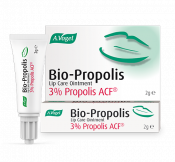An introduction to cold sore treatments
Cold sores are highly contagious infections caused by the cold sore virus and usually clear up without any treatment within two weeks. Although cold sore treatments can help the symptomatic relief of cold sores and speed up their healing, in general, there is no treatment that can permanently remove the virus from the body.
A cold sore usually starts with a tingling sensation, which then develops into a painful blister and later, other symptoms. For more information, visit our cold sore symptoms page.
There are a number of cold sore treatments available – these reduce symptoms, aid recovery and help decrease the spread of the virus. Some treatments are applied at the tingle stage, others at the blister stage. Some may be used at all stages of the cold sore.
Cold sore treatments range from conventional medicines to complementary preparations. As many visitors to this page will be interested in the alternatives to conventional treatment, we start our discussion of cold sore treatments with complementary therapies.
Complementary cold sore treatments
A number of alternative or complementary cold sore treatments are available:
- Light therapy – these devices can be used at the tingle stage and when a blister has formed, to shorten the duration and severity of the cold sore. It uses light at a frequency of 1072nm (which is invisible to the human eye) to stimulate the body's immune response
- Echinacea has been shown to have an anti-viral effect against cold sore viruses. Echinacea is available in tincture, tablet and cream formulations
- Propolis based cold sore remedies have been popular for many years. The ointment acts as a barrier, may be used up to five times daily to the affected area and at any stage of the cold sore
- L-Lysine is an essential amino acid food supplement shown to have anti-viral effects by blocking the activity of arginine which promotes HSV-1 replication
- Vitamin C can be taken to inhibit the progression of the cold sore virus
- Dietary advice – decrease your intake of nuts and chocolate as these contain arginine which feeds the cold sore virus
- Decrease stress, as stress is a commonly known trigger factor for activating the cold sore virus.
Conventional cold sore treatments
Conventional cold sore treatments include the following:
- Pain relief preparations taken orally, such as aspirin, paracetamol or ibuprofen, can ease pain or discomfort
- Anti-viral over-the-counter creams containing aciclovir and penciclovir can help to speed up healing time if applied early enough. These treatments should be used at the early tingle stage to help prevent the cold sore from forming
- Astringents such as tannic acid and zinc sulphate, available as creams or ointments, are treatments which help to dry out the cold sore at the blister stage
- Ammonia may be used in topical cold sore treatments to help with the pain
- Local anaesthetics and antiseptics are treatments to help ease pain and keep the area clean.
- Menthol and camphor based cold sore treatments produce a cooling feeling to help ease discomfort
- Cold sore patches – these are thin, film-like plasters containing a hydrocolloid gel to hide the sore while it heals. It is not a true treatment for cold sores
- Oral anti-viral medication - if the infection is severe, your GP may prescribe treatment using anti-viral medication taken orally
Self-help and other advice
As well as treating the cold sore there are a number of tips you can use to help recovery and prevent the spreading of cold sores.
- When using a cream or ointment as cold sore treatment, it is important to dab the affected area and not to touch any other areas of the face to avoid spreading the cold sore. It is especially important to avoid spreading the cold sore to the eyes and so once the treatment cream or ointment has been applied, hands should be washed thoroughly to prevent spreading to other areas as well as other people
- Close personal contact or sharing of items that have been in contact with the virus such as creams, lipstick, cutlery etc should be avoided. Avoid picking the cold sore scab as this may cause infection, spreading or scarring
- To help prevent scarring, keep the skin soft with a simple moisturiser
- Remember to ask yourself, each time the cold sore appears, what may have triggered the cold sore attack so as to eliminate that trigger factor in the future to prevent recurrence.





 Looking for our products in a store near you?
Looking for our products in a store near you?

